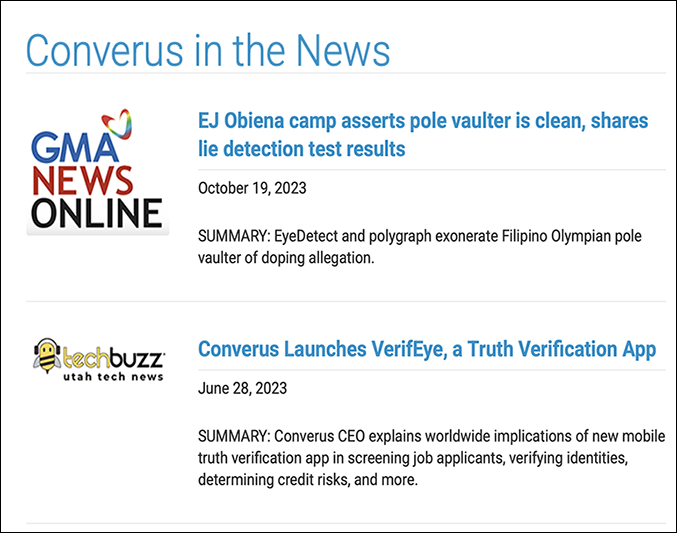
According to Helen Comperatore, her husband Corey’s last words before bullets from a gunman at the July 13 Trump rally in Butler, PA, killed him were, “Get down!”
The death of this former Buffalo Township Volunteer Fire Company fire chief as he heroically shielded his family from the gun fire was tragic, unnecessary… and preventable. Our hearts and prayers are with his family.
It teaches the importance for organizations to “get down” their communications planning ahead of time.
“Nothing about man on the roof, nothing about man with a gun. None of that information ever made it over our net,” testified Acting U.S. Secret Service Director Ronald Rowe Jr. at a joint Senate oversight hearing on July 30 regarding the July 13 attempted assassination of former President Donald J. Trump.
(btw… My reporter friend at The Epoch Times, Janice Hisle, was at this rally. You can read her firsthand account here: The Most Terrifying Assignment of My 30-Year Journalism Career.)
Lack of real-time communications and communications planning between the Secret Service and local law enforcement almost took the life of a former U.S. president and current Republican presidential candidate, critically injured two others (fortunately, they’ve recovered), and tragically killed one.
An Epic Communications Failure
“All roads lead back to communication,” Michael Verden said about the Butler shooting. Verden is a former Secret Service agent and the founder of the Illinois-based Lake Forest Group, a security firm.
“On the surface, it seems like a clear communications failure,” he added. “I’ve done these events with presidents, and you have to have a strong, seamless communications plan.”
Now the Secret Service is embroiled in their own crisis communications disaster. Their reputation is in the doghouse. They need to get their story out as quickly as possible as to what happened and what their plan is moving forward to prevent this from ever happening again.
Amidst mounting pressure, Kimberly Cheatle — secret service director at the time of the shooting — finally did the right thing by submitting her resignation, albeit 10 days later. This reluctance to resign gives the perception Cheatle was unwilling to take ownership for this utter communications disaster.
Communications & Trust Grossly Mismanaged
Even though we don’t have all the answers yet (since the investigation is ongoing) on how this was allowed to happen, it’s abundantly clear communications and trust between key entities was grossly mismanaged:
- According to Rowe, information about the shooter was described as “siloed” and “stuck” in local law enforcement channels.
- Rowe confirmed the Secret Service had a connectivity challenge deploying a drone. Another communications failure, you could say.
- Local law enforcement offered to fly its own drone, which the Secret Service purportedly declined.
- Local law enforcement said the Secret Service also turned down its offer to provide them with radios to easily facilitate communications between the two organizations.
7 Lessons Learned from this Communications Fiasco
There are a lot of communications lessons for businesses to learn from this event. Here are seven of them:
- Identify your organization’s stakeholders.
- Clearly define the roles of each stakeholder.
- Establish and nurture mutually beneficial, two-way communications with all stakeholders.
- Have all stakeholders playing key roles in an event to have input in the creation of a seamless communications plan.
- Create the communications plan ahead of time so it can be thoroughly reviewed and vetted.
- Treat all stakeholders as equal partners. Work with them, not “above” them. No need for a pecking order.
- Share all information. Eliminate any siloing of information.
If an organization doesn’t effectively communicate with its most important stakeholder, employees, that can kill employee morale and lead to a toxic corporate culture with high employee turnover.
If information is siloed within departments and not shared with other departments, that can harm creativity and innovation — and ultimately affect the productivity and profitability of a company.
If You SEE Something, SAY Something (But If No One’s Listening…)
Law enforcement spotted the would-be assassin early 90 minutes before he opened fire. But he somehow managed to evade law enforcement and climb onto the rooftop outside the perimeter of the rally. Even then, it was only 400-450 feet from the stage and gave him a direct line of sight to the former president.
It’s even reported a civilian or civilians saw a man on a roof with a firearm and tried to alert law enforcement.
Rowe said in his testimony that the Secret Service agents on Trump’s security detail, as well as snipers on duty, were never told that the shooter was positioned on a nearby roof with a rifle. They only learned of his presence after he started shooting. A little late by then.
But this doesn’t jive with the local Butler County Emergency Services Unit. They said a counter sniper team member texted the Secret Service counter sniper team leader at 5:45 p.m. about a suspicious person and sent two photos of the individual. Eight minutes later the team leader of the Secret Service counter sniper team emailed the Secret Service counter sniper teams that local law enforcement was looking for a suspicious individual outside of the perimeter, “lurking around the AGR building.”
According to Homeland Security Committee Chairman Gary Peters, local law enforcement claims they were “only able to call in to a state command center” and not able to easily communicate threats to the Secret Service.
Not a time you want to have difficulty communicating.
“It is troubling to me that we did not get that information as quickly as we should have,” Rowe said. “We didn’t know that there was this incident going on.”
It’s also troubling 50-year-old Corey Comperatore had to lose his life because the Secret Service didn’t “get down” a common-sense, comprehensive communications plan.
The 3 Big Takeaways
- Know which stakeholders need what information.
- Establish and test communications channels ahead of time.
- Be able and willing to share and listen to all information.
Need to review your communications plan with your stakeholders? Click here to schedule a time to chat.
Stay authentic!

Jeffery E. Pizzino, APR is a spin-free public relations pro who is passionate about telling the why of your story with clarity, impact and authenticity. He began his PR career in 1987 at Ketchum Public Relations in New York City but has spent the majority of his career as a solopreneur. He’s AuthenticityPR’s Chief Authentic Officer and also functions as the fractional CCO for technology startup Converus.
Jeff has an MBA in Management from Western International University and a Bachelor of Arts degree in Communications — with an emphasis in PR — from Brigham Young University. He’s a native of Milwaukee, Wisconsin, but also holds an Italian citizenship. Jeff and his storyteller wife Leticia have four children and four grandchildren. In his extremely limited nonwork hours, he studies italiano, practices guitar, gardens, disc golfs, reads, listens to New Wave music, serves in his church, watches BYU football, and plays Dominion and Seven Wonders. Email Jeff.

